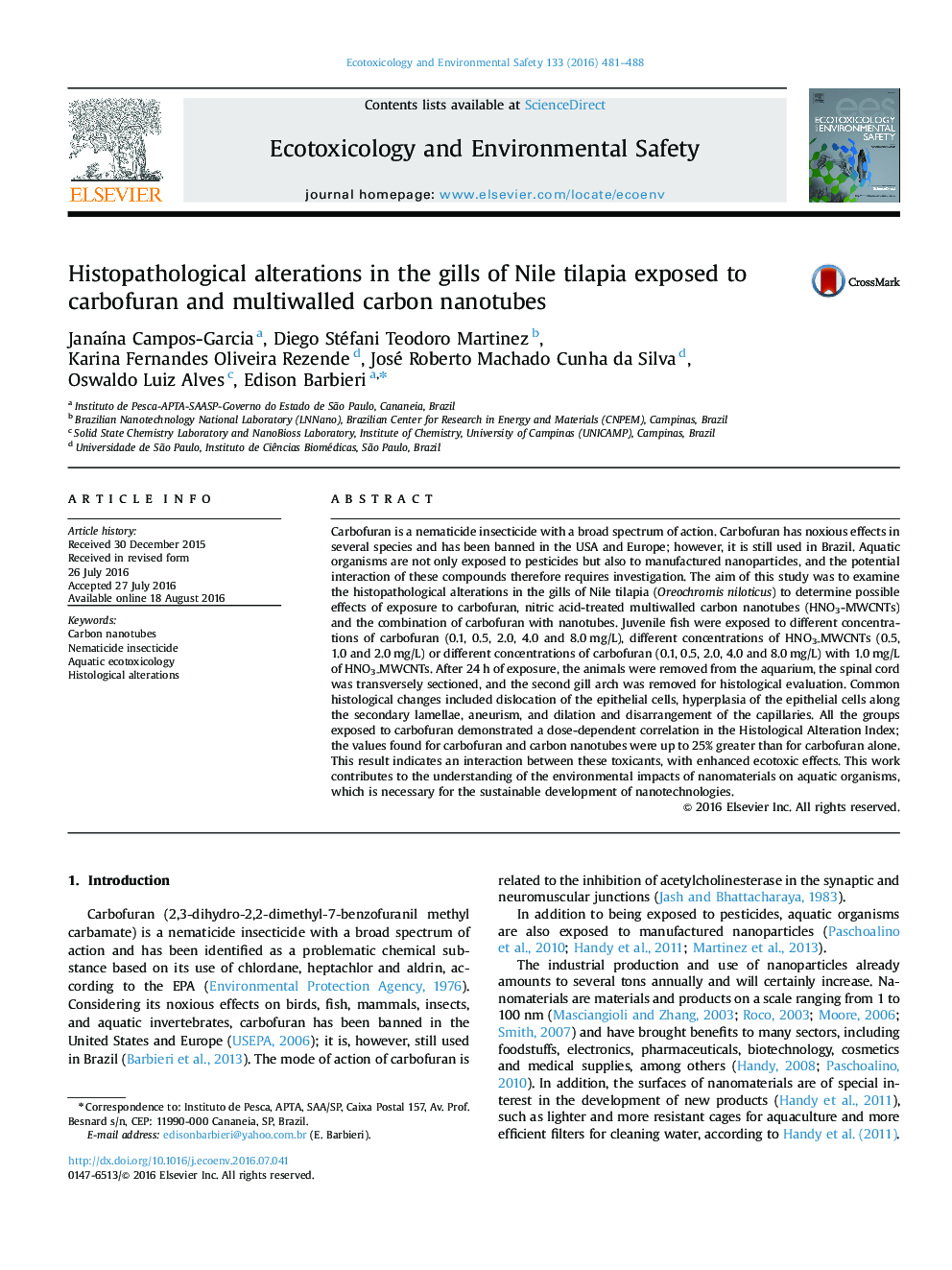| کد مقاله | کد نشریه | سال انتشار | مقاله انگلیسی | نسخه تمام متن |
|---|---|---|---|---|
| 4419028 | 1618930 | 2016 | 8 صفحه PDF | دانلود رایگان |
• Carbofuran and multiwalled carbon nanotubes jointly affected Nile tilapia.
• Histopathological alterations in the gills was a sensitive parameter for the acute effect of toxics.
• Interaction between these toxicants in fish suggested enhanced ecotoxic effects.
Carbofuran is a nematicide insecticide with a broad spectrum of action. Carbofuran has noxious effects in several species and has been banned in the USA and Europe; however, it is still used in Brazil. Aquatic organisms are not only exposed to pesticides but also to manufactured nanoparticles, and the potential interaction of these compounds therefore requires investigation. The aim of this study was to examine the histopathological alterations in the gills of Nile tilapia (Oreochromis niloticus) to determine possible effects of exposure to carbofuran, nitric acid-treated multiwalled carbon nanotubes (HNO3-MWCNTs) and the combination of carbofuran with nanotubes. Juvenile fish were exposed to different concentrations of carbofuran (0.1, 0.5, 2.0, 4.0 and 8.0 mg/L), different concentrations of HNO3-MWCNTs (0.5, 1.0 and 2.0 mg/L) or different concentrations of carbofuran (0.1, 0.5, 2.0, 4.0 and 8.0 mg/L) with 1.0 mg/L of HNO3-MWCNTs. After 24 h of exposure, the animals were removed from the aquarium, the spinal cord was transversely sectioned, and the second gill arch was removed for histological evaluation. Common histological changes included dislocation of the epithelial cells, hyperplasia of the epithelial cells along the secondary lamellae, aneurism, and dilation and disarrangement of the capillaries. All the groups exposed to carbofuran demonstrated a dose-dependent correlation in the Histological Alteration Index; the values found for carbofuran and carbon nanotubes were up to 25% greater than for carbofuran alone. This result indicates an interaction between these toxicants, with enhanced ecotoxic effects. This work contributes to the understanding of the environmental impacts of nanomaterials on aquatic organisms, which is necessary for the sustainable development of nanotechnologies.
Journal: Ecotoxicology and Environmental Safety - Volume 133, November 2016, Pages 481–488
